Recovering from an Injured Rotator Cuff
You may have an injured or torn rotator cuff if you experience significant, recurring pain and weakness in your shoulder that lasts for longer than one week. You may also notice difficulty in moving your shoulder through its normal range of motion. Overhead lifting, pulling motions and reaching behind you may all aggravate the symptoms of an injured rotator cuff. A serious injury to the rotator cuff requires surgery to repair; proper nutrition is critical for healing this type of injury.
How have you handled a rotator cuff injury in the past?
What is the Rotator Cuff?
The muscles and tendons that hold your shoulder in its socket make up the rotator cuff. It can be injured by a sudden shock, such as a fall or blow while playing sports; or gradually, by a repetitious motion that eventually wears on the shoulder, such as throwing a ball or painting a wall. This is especially common in individuals older than 40, since the collagen that protects the muscles and tendons often begins to break down after that age.
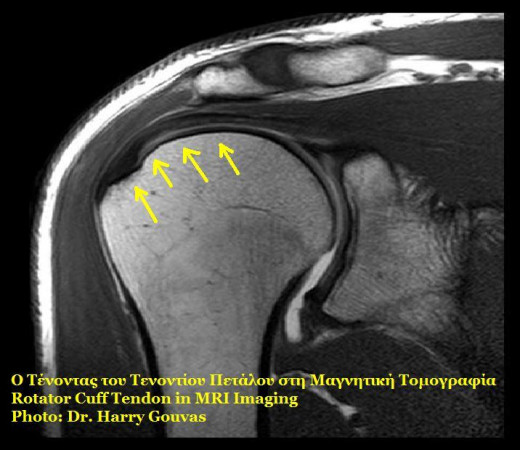
Surgery
Several types of surgeries can be performed to repair rotator cuff tears. The surgery may be an "open repair," which involves a 2.5- to 4-inch incision in the shoulder; a "mini-open repair," which requires a 1.25- to 2-inch incision; or an arthroscopic repair. An arthroscopic repair is not an open surgery at all; it only requires a few very small incisions through which a camera is inserted, leading to a faster recovery time after the surgery. Depending on the type of surgery, healing generally takes between three and six months. During the healing process, you will likely need a physical therapy to regain the shoulder's strength and flexibility.
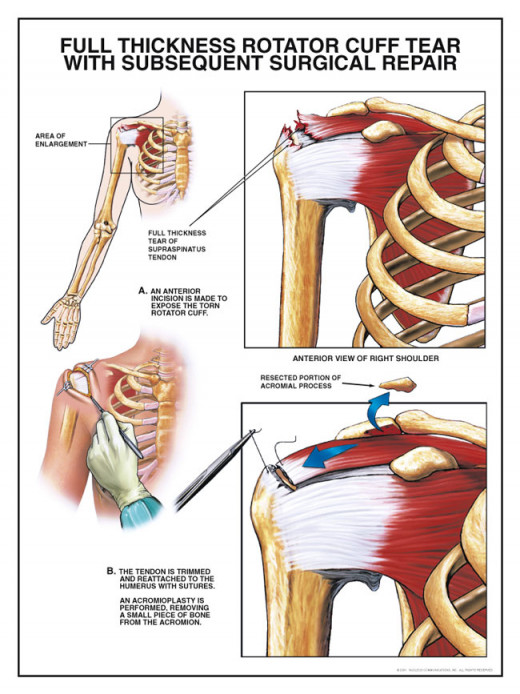
Home Treatment
Fortunately, not all rotator cuff injuries are severe enough to need surgery. You may be able to heal minor injuries by treating them at home. Most importantly, immediately stop whatever motion caused the pain when you first noticed it. Continuing a repetitive motion after the rotator cuff has been damaged can quickly increase the severity of the injury.
Applying ice packs to the affected area for about fifteen minutes every few hours may help reduce the discomfort. After a few days, when your body has begun to repair itself, applying hot packs can help loosen up stiffness and tightness in the area. If necessary, you can also use over-the-counter pain relievers in accordance with any label guidelines. If the pain becomes severe, however, or if it lasts for more than a few days, you should seek professional medical attention; your doctor will be able to determine whether you need surgery or if another treatment option, such as physical therapy or a cortisone shot.
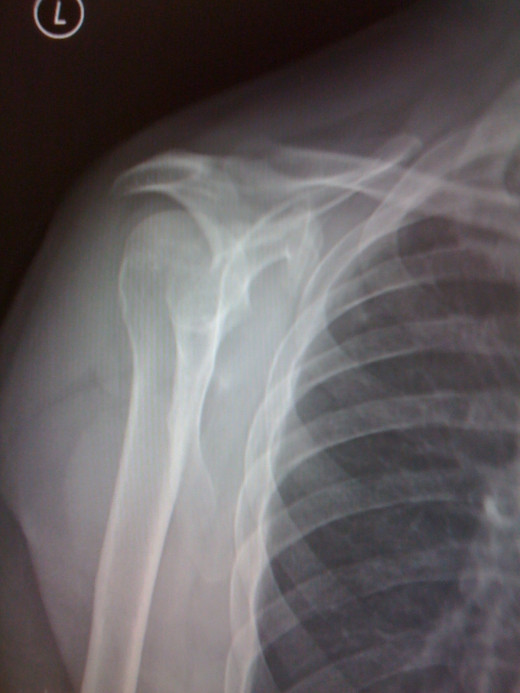
Nutrition for an Injured Rotator Cuff
Even if you are not physically active, you need protein to maintain and regenerate all of your body's different cells. However, protein is particularly important if you exercise regularly or are involved in sports, and it is even more important if you are healing from an injury like a torn rotator cuff. Your body uses this protein to regenerate damaged tissues during the healing process. A protein shake can be a good way to provide that protein when you do not have the time to prepare a meal that contains healthy protein-rich foods, such as eggs, nuts and lean meats. Of course, your body also needs many other nutrients to be healthy, so make sure your diet overall is nutritious and balanced.
If you are not careful, it is easy to consume more protein than your body needs if you supplement with muscle recovery shakes. Although excess protein is not harmful to most people who stay well hydrated and eat a nutritionally complete diet, it will not provide any additional benefits over the normal required protein intake. The Centers for Disease Control and Prevention recommend that most adult women consume about 46 grams of protein daily, and most adult men consume about 56 grams of protein daily. Consuming more than that may lead to unhealthy weight gain in some cases.
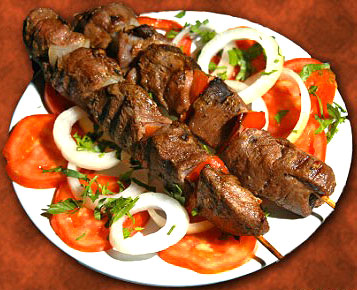
Preventing a Reinjured Rotator Cuff
Whether you are fortunate enough to have never injured your rotator cuff, or you have gradually recovered from such an injury, focusing on prevention can help ensure that you never have to deal with this problem in the future. First, before any physical activity, take the time to gradually and thoroughly warm up. The specific warmup necessary will vary depending on your goals, but make sure that you include plenty of easy, relaxed arm swings and circles to warm up the rotator cuff.
Second, imbalance in the strength of different parts of the shoulder (such as the back vs. the front) can significantly increase your risk of rotator cuff injury.Therefore, incorporate exercises specifically designed to strengthen and support all parts of your shoulder into your fitness routine. For example, rows and fly variations, along with the more commonly used bench press, shoulder press and the like, can help protect this frequently neglected part of your body, substantially lowering your risk of future injury.
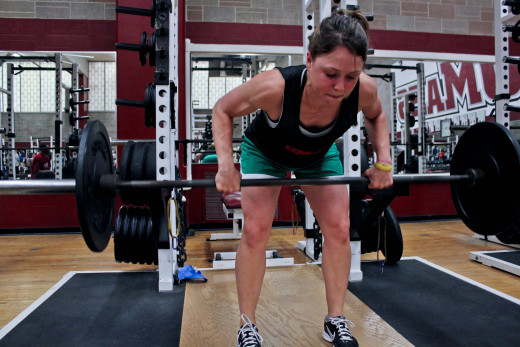
References
© 2015 CJMcAllister








